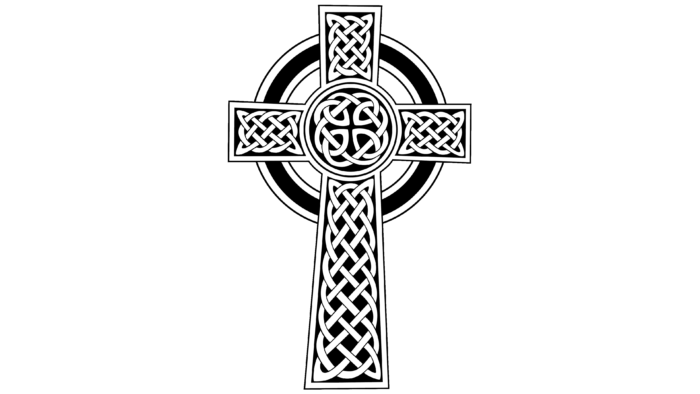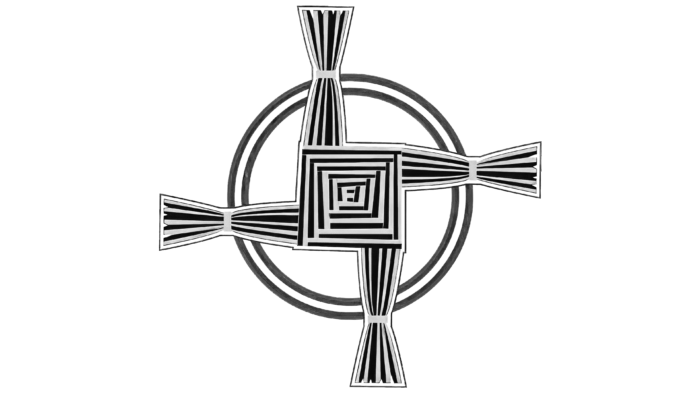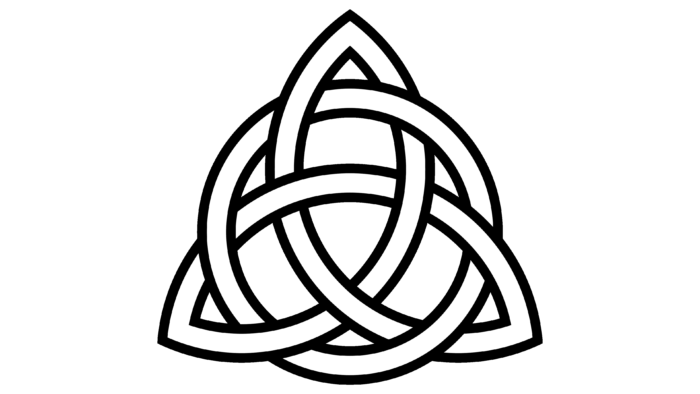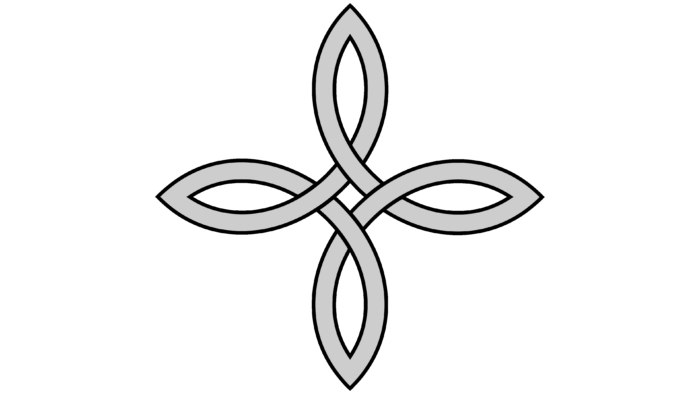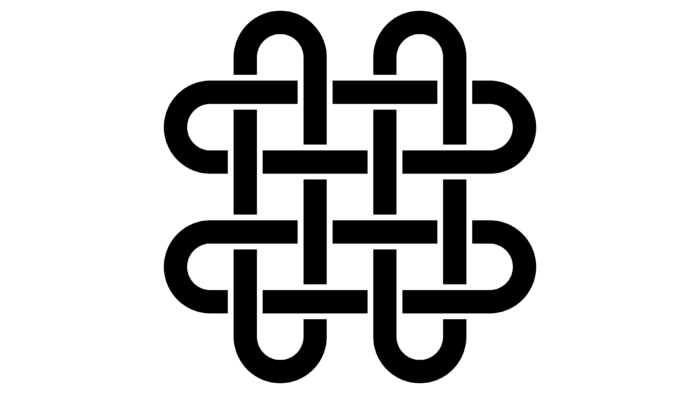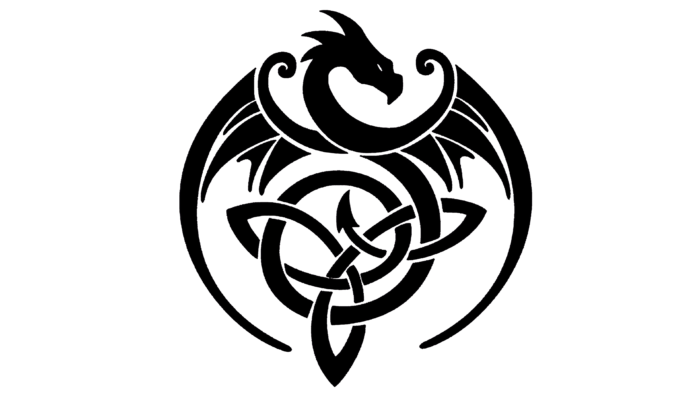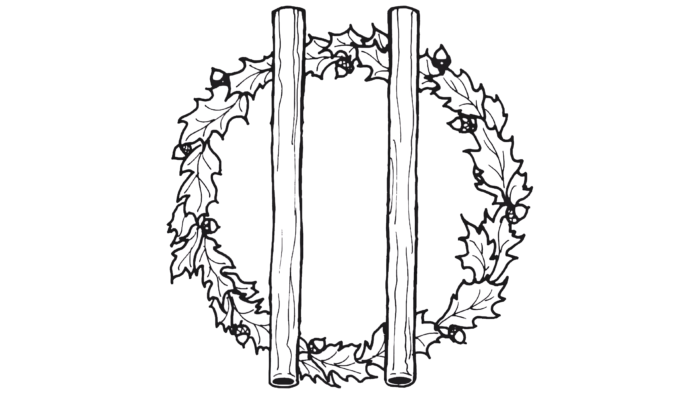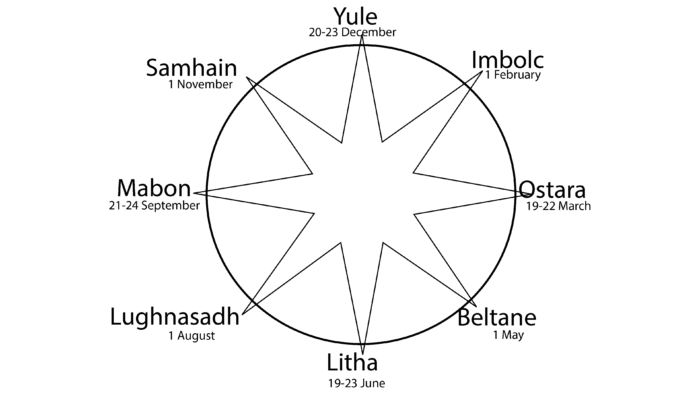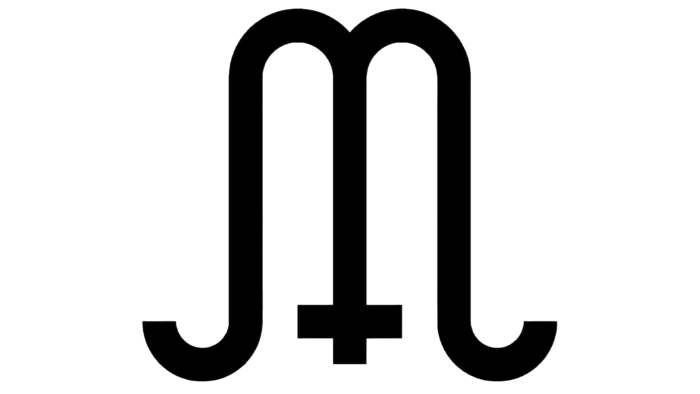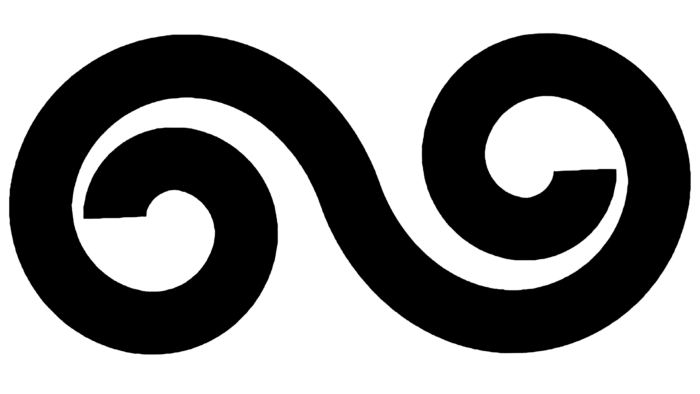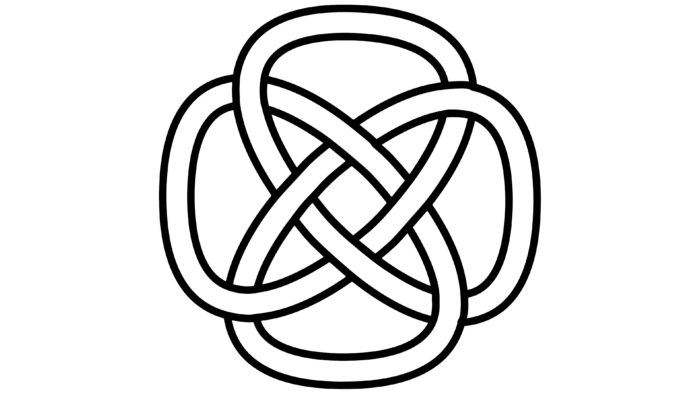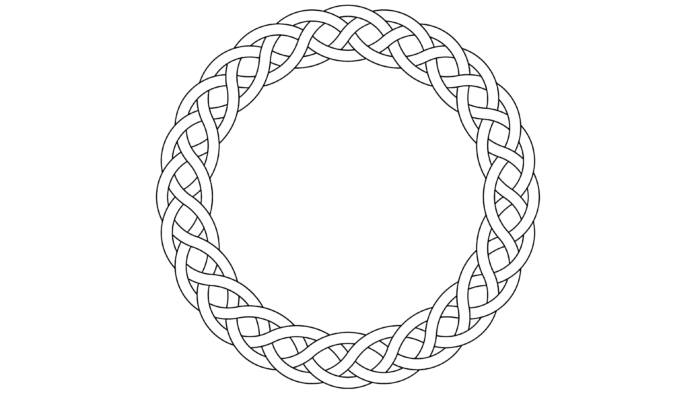No matter how creative uniqueness is asserted, the transformation of our reality is based on the cultural heritage of our ancestors, perpetuating the memory of different peoples. The modern author tends to pay more attention to his vision of the solution to the problem and its form, not realizing the meaning embedded in his product, broadcast a thousand years ago. Today, everything that carries a mystery is interesting, and a light mystery gives aesthetic pleasure. Therefore, the unquenchable curiosity of representatives of visual culture is awakened by the age of the Celts.
What are the main Celtic symbols and their meanings?
The main Celtic symbols include the Celtic Cross (denotes the sun and cardinal points), the Tree of Life (represents the lower world, earthly Life, and the sky), the Triskelion (shows cyclicality), the Celtic Spiral (expresses the human principle, the connection of body, spirit, and consciousness), as well as the Trefoil (a sign that supposedly protects from negativity).
The possible roots of these people’s names are related to the word “keel,” which means “to hide.” And according to modern archaeologists and ethnographers, the Celts had something to hide. They were militant, freedom-loving, brave, and courageous. And this in the character of the Celts was enhanced by their devotion to their mythology and an irresistible craving for the transcendent. Before Christianity, they had a pantheon of gods – a pagan belief system with attributes and cults. This is evidenced by Celtic artifacts found by scientists and the recorded testimonies of Hecataeus of Miletus and Diodorus of Siculus. The links between the external symbols and the inner world of the Celts are inextricable. The potential of their spirit was necessarily demonstrative: ornaments and patterns were sacred signs that made changes in Life, attracted good luck, diverted trouble from the house, emphasized natural talents, or strengthened physical and spiritual strength. Each pattern had mystical power – destructive or constructive, depending on the use of the ornament, its medium, or the object on which the image was applied. Undeniable and obvious: the traditions of Celtic culture intertwined in the patterns of generations. They have become a measure of elegance and versatility of the fine arts in our time.
1 Celtic Cross
Perhaps the most popular among fans of Celtic culture is the Celtic cross. Visually, it represents pointed and rounded patterns of interwoven threads shingled or inscribed in a circle. When considering such a combination of forms, one immediately thinks of harmony, integrity, and cyclicality. Indeed, this ornament testifies to the connection of cardinal points; from below, the image always points to man’s growing needs. Guess and the image of the sun – sociocentrism was a distinctive feature of Celtic paganism. Therefore, it is unsurprising that the bearers of this pattern believed in protection from dark forces and talent of a special kind.
2 Tree of Life
Another sought-after pattern is the image of the Tree of Life. It is not difficult to imagine this ornament: the hands reach for the sky, and at the bottom, you can see the outline of the tree’s root. The symbol reflects three concepts – the lower underworld, earthly Life, and the sky. Celtic tribes had a special relationship with nature; they particularly valued trees. Visual images of the tree endowed objects of Celtic Life with sacred meaning, visually linking the past, present, and future.
3 Triskeles
One of the other recognizable images is the Triskelion. Its name comes from the name of the deity of spring or summer, Triskeles. His appearance in human Life is dictated by the cyclical nature of the seasons: each time, he passes through the stages of Life and death, rebirth and extinction. The depicted Thread of Life, passing through the Earth, Water, and Fire, brings a person grace, wealth, and good luck. Since the Celts believed that the gods gave the patterns to people as a gift, they should not be changed. After all, doing so would have irreversible consequences, violate what the deities had ordained, and incur their wrath, which would make them harsh and deaf to the prayers of the pagans.
4 Celtic Spiral
No less interesting is the pattern of eternal infinity, metaphysical and mystical search, and spiritual hunger. It is depicted in spiral petals and has various modifications depending on the owner’s preferences. This pattern denotes the constancy of harmony, persistent spiritual growth, and stability of the triad “body-spirit-consciousness.” The central point of the spiral is the place of man in space, the universe, and his existence in the world. Thus, the Celts pointed to the beginning, the origin of man, and represented him in the vast world, which is self-sufficient, integral, and thus self-sufficient.
5 Shamrock (Clover)
The clover is the most undisputed symbol of Ireland. According to legend, this plant helped the Christian missionary and catechist St. Patrick explain the meaning of the three hypostases of the Trinity. The Celts were convinced that the shamrock protected against the failure of planned events, evil tongues, and the evil eye and could even anticipate the beginning of a storm by taking an upright position.
6 Wheel of Taranis
Having familiarized with the variety of images of the pagan pantheon, it becomes clear why the key figure in the beliefs in natural forces is Taranis, the god of thunder. His mythological “brother” is the Roman Jupiter. Therefore, the image of the bearded hero, in the hands of lightning and wheel, is repeatedly found in archaeology in the territories of the former Celtic civilization. Taranis united the sky, the sun, and lightning. His power formed the basis of image motifs for coinage.
7 Aven
Aven (three rays of light) is hotly debated among fans of neo-paganism and specialists in Druidic practice. Some say it is the three elements (water, earth, air), and some believe it is a generalization of the physical and rational. Spiritual beginnings of man, some say, symbolize the inseparability of love, reason, and truth. The idea of the awakening of truth is also present here: the desire to know the truth, to protect it, and to realize it is played out.
8 Claddagh Ring
Nothing epitomizes friendship, romance, and love feelings as vividly and visually as the Claddagh ring. This pattern is transparent and unambiguous, based on hands holding a heart. Such jewelry signifies support, friendship, love, and approval. Hands – support, reliability, strength of feelings. Heart – love, friendliness, friendliness, and loyalty. The crowned heart signifies loyalty and approval, i.e., status support of something or someone.
9 Cross of Saint Brigitte
Brigitte is considered the patron saint of Ireland, and her cross is the unofficial symbol. The saint is revered in Catholicism and Orthodoxy, although there is little information about her Life. Her generosity and wisdom, manifested in miracles, are described in legends, and her celebrated kindness and mercy are combined with a surprisingly simple character and humility. This accompanies the image of the cross – simple, unassuming, and understandable. According to legend, she wove a cross when her father (according to another version of the legend – a rich pagan) was about to go to the next world. Having realized the meaning of the “wreath” symbol, he decided to be baptized before his death.
Usually, such a cross was made of reeds or straw, and in the center, a square was made with weaving. The result is rays, and the circle symbolizes the sun. There are beliefs that such a cross wreath will protect the house from troubles, and some Catholics living in villages still use this ornament.
Geometrically opposite shapes can indicate the unity of human life’s physical (material) and spiritual (immaterial) sides. The soul strives for salvation, and it turns out that its visual image is enveloped by the almighty Sun of Truth.
10 Triquetra
Triquetra is a curious and ambiguous pattern. Its variations are different, and its meaning is reduced to a description of the three roles of the female goddess (Maiden, Mother, Smart Woman). Some medievalists believe that originally, this ornament looked simpler and functionally played the role of a “patch,” a graphic element to fill complex compositional patterns.
Be that as it may, in the pattern, a circle and several triangles can be seen from here; in fact, the name went. In Latin, it means “three” and “having angles”. When discussing the meaning of this pattern, ideas are added that it symbolizes the sun’s movement, the phases of the lunar cycle, and the embodiment of renewed Life.
11 Celtic Knot
The Celtic Knot is a thread twisted several times in a complex pattern. In general, we can assume that this is a line of Life, the life path of man, long and difficult, always with dashing turns and unexpected descents and ascents. At least, visually, it looks like this. Most likely, the Celts used this pattern to denote the desire to know the truth, the meaning of their lives, and a way to accept their fate as it should be. Undoubtedly, this ornament speaks of man’s entanglement in the world, his twists and turns, and his search for a way out. There are also explanations of this pattern as a symbol of love, eternity, and the union of kindred souls.
Sailor’s Knot
From the name, this ornament is associated with separation, parting, and endless love. It can be assumed that this ornament arose due to the practical creation of the favorite sailors of the Knot in memory during a long and forced separation.
Bowen Knot
The heraldic knot, also known as the Bowen, was invented by the Welsh James Bowen in the XVII century. This symbol was conventionally nicknamed “the knot of a true lover.” The endless rope pattern, in which four loops are visible, forms a square or four-pointed cross. It is logical to assume that it is not a knot but tangled loops with no beginning or end. In Norwegian heraldry, such a knot is called “valknute.” This symbol has several modifications but is united by the main feature – endless loops. Using this pattern meant an expression of devotion and special disposition of a man to a woman.
Solomon’s Knot
This ornament, named in honor of King Solomon, is considered a symbol of masculinity, wisdom, and strength of character. The exceptional traits of a wise ruler and a powerful man characterized him. A person wearing such an ornament positioned himself as a strong and authoritative person.
12 Animalistic patterns
Birds
The Celts held birds in high esteem. They earned respect through connection to the sky, freedom, and independence. Therefore, bird motifs can be found in the ornaments of Celtic culture, containing the idea of the sky’s patronage, the gods’ help to people, and the transfer of their will through birds.
Hare
It is not surprising that the hare also became a revered symbol of the Celts because, in its nature, it laid such features as speed, sensitivity, physical endurance, and fertility. This is why prosperity and well-being were demonstrated through hare patterns.
Snake
It is logical to assume that the snake symbolized the Celts’ depth of knowledge and high intelligence. However, ancient people put another meaning—they considered snakes excellent healers. This meant that the mesmerizing effect brought the Celts to use their traditional methods of treating diseases and wearing attributes with snake patterns.
Deer
It would seem that the deer deserved such attention from the Celts because it is just a large and fast animal. However, Celtic beliefs say deer represents the connection with the cosmos, the universe. A symbol of cyclical Life, rebirth, and a source of energy, it was directly connected to the Tree of Life due to its anatomical feature – horns. Interestingly, the Celts associated it this way: every year, the antlers of the deer change, grow new, and are in shape. They resemble a tree, meaning every year adds vitality, contributing to spiritual growth.
Boar
The bearer of the boar pattern promised fortitude before enemies, courage, and stubbornness to those around him. On the other hand, it symbolizes softness, ease of communication, and hospitality. This symbol was also associated with Celtic housewives, who, in turn, considered boar meat a delicacy.
Bull
Fertility, strength, prosperity, and power distinguished the Celtic symbol from the bull. Both women and men named it and used it to decorate the walls of domestic fortifications.
13 Mythological creatures
Since the Celts were a people who believed in the mystical, they also tried to transform animals into powerful and mysterious beings in ornaments.
The Dragon
For example, the dragon is an unshakable stronghold, has strength and agility, inspires terror and awe, and inspires outward confidence. Integrity and isolation, self-sufficiency and eternity, invincibility and immortality were represented as a dragon with a spear in its tail.
Griffin
Like the lion and the eagle, the griffin combined nobility, harmony, loyalty, and strength. It extremely inspired the Celts to brave feats of arms.
14 Druid Sigil
Vertical lines running parallel and crossing the circle lines are the ritual signs of the Druids—sigils. The sigil is a magical element, so not everyone can wear it. It signifies fertility, a rich harvest, and a connection to Mother Earth.
15 Gaelic Festivals
The Celts had their calendar of holidays and designated each holiday with certain symbols.
Yule
It is a celebration of the new sun’s splendor and victory over darkness, similar in meaning to the Roman tradition of Saturnalia and Christian Christmas.
Imbolc
St. Brigitte’s Day, the Feast of Imbolc, signified the return of the light. It was the end of winter, and rituals were performed to attract good luck and prosperity.
Eostre
According to Celtic mythology, Eostre (Ostara) awakened nature in the spring. Curiously, this name provides the semantic basis for Easter.
Beltane
This pattern was essential in celebrating the beginning of summer. The name itself comes from the words “at-beil” – “the shining fire of Bela” (deity) is dying out. On this day, it was believed that the doors to the gods were open, and they could be asked for anything, including good weather for the harvest.
Lammas
According to Celtic traditions, Lammas is a holiday that celebrates the glorification of Mother Earth and Father Sun, who generously give people a bountiful harvest. The name of the ornament exactly repeats the name of the holiday, which means “bread mass.” This ornament expressed maturity, gratitude to the gods, and energy, and the Druids believed it was a sign of fading and preparation for the departure into eternity.
Lughnasadh
The name August in Celtic also gives the pattern its name and translates as “the gathering of Lugh” (the god who held a feast after the death of his adoptive mother).
Malbon
Malbon is the pattern of the end of the fertile harvest period. It is a time of gratitude to the gods for their loyalty to the people, generous gifts, and help. With the help of this symbol, gratitude is expressed to the fertile land, which is summed up in the fall with the last harvest.
Samhain
It completes the list of famous Celtic symbols, one of the most favorite is the Samhain pattern. It was the last “song” of the harvest period, the closing of the sowing season, the gathering of fruits, and the grazing of cattle on rich meadows. The holiday signified finality, the approach of death, and the finality of all living things on earth.
16 Double Spiral
In the Celtic culture, the pattern of two intertwined spirals, directed in different directions, is associated with the concept of “eternity.” The fact is that twisted lines have neither beginning nor end so that they can represent the endless cycle of birth, Life, and death. Sometimes, they symbolize development, as the inward movement of the spiral reflects the invisible process of personal evolution. In a broader sense, it symbolizes any transformation and change – not necessarily spiritual. In China, the double spiral symbolizes harmony between Yin and Yang, two opposites that come together to form a whole.
17 Cernunnos
The ancient Celtic god Cernunnos is often depicted with stag, ram, or bull horns and his symbol of power, the serpent. In some drawings, torcs, metal hoop-shaped necklaces popular among men, dangle from the horns. Cernunnos was the patron saint of fertility, wildlife, and animals in Celtic mythology. Because he was considered the god of magic and wisdom, the Celts associated him with spirituality, enlightenment, and inner development. In modern interpretation, it is a symbol of masculinity and strength.
18 Cross of Triquetras (Carolingian Cross)
The cross of Triketras combines elements of Christian and Celtic symbolism. On the one hand, it consists of four triquetra, which the Celts associated with wholeness and infinity. In addition, the twisted lines denoted magic, spirituality, and motherhood.
On the other hand, the Carolingian cross was widely used in Christianity as a personification of the Holy Trinity—Father, Son, and Holy Spirit. It epitomized the idea of salvation through Christ’s sacrifice. During the Carolingians’ reign, the cross symbolized their dynasty and the unity of spiritual and secular authority.
19 Dara Celtic Knot
The Celtic Knot of Dara is associated with both Celtic and Irish culture. It consists of intertwining lines representing the branches and roots of the oak tree. The Celts considered this tree sacred and believed it gave people strength, endurance, and longevity. The Celtic Knot of Dara symbolizes strength and stability, primarily on a spiritual level. This sign is also associated with the goddess Brigita, patroness of art, wisdom, and knowledge.
20 Quaternary Celtic Knot
Some believe that the Quaternary Celtic Knot symbolizes the balance between the four elements: earth, air, fire, and water. According to another version, it can be interpreted as a symbol of the four paths a person can choose: intellectual, spiritual, emotional, and physical. It is also a sign of infinity, having neither beginning nor end, reminding us of the cyclical nature of Life, that everything changes and evolves.
21 Eternity Knot
The eternity knot consists of a single intertwining and winding line. It has different variations, but the basic form always remains the same. In the Celts, this sign is associated with mystical beings and symbolizes the cycle of Life, death, and rebirth. In Buddhism, the “knot of eternity” expresses the interconnectedness and interdependence of all things in this world. Modern pop culture uses it as a personification of endless love and friendship.
22 Five-Fold Symbol
The symbol of the five folds is usually identified with the number five, but it has many other meanings:
- God, spirituality, faith, heaven;
- fire, earth, air, and water;
- winter, spring, summer, fall;
- north, south, west, east.
The symbol shows their interconnection and harmony. At the same time, the central link is the unifying element—the universe itself, which is surrounded by different energies.
23 Triskelion
The Triskelion contains three interlocking spirals associated with the triple divine essence. However, they are sometimes associated with other aspects such as past, present, and future or Life, death, and rebirth. In Celtic culture, the triskelion represents the unity of heaven, earth, and the spirit world. In the ancient Greeks, it symbolized the sea god Poseidon. In modern interpretation, it is a sign of balance and harmony.
24 Circular Knots
The Celts used circular knots to symbolize eternal Life because they have no beginning or end. The intertwining lines that form a circle represent the endless passage of time. They also express the concepts of devotion, love, and friendship. In addition, circular knots can signify protection and strength, as an unbreakable network is associated with unity.
25 Ailm
The cross in a circle represents the letter “A” from the Old Irish alphabet Ogham, which is the basis of the Gaulish script. Ailm traditionally symbolizes a pine or fir tree. In Celtic culture, these evergreen trees were associated with spiritual and physical healing. They were also believed to have protective properties and could eliminate evil spirits. All these qualities were automatically transferred to Ailm, so the sign was used to create amulets. It currently serves as a talisman promising wisdom, rebirth, and renewal.
Video
FAQ
What is the most famous Celtic symbol?
One of the most famous Celtic symbols is the Celtic knot. Its complex and endless loops represent eternity and the interconnectedness of life. This symbol has neither beginning nor end, denoting the eternal nature of spiritual and physical existence. These knots are found in ancient manuscripts such as the Book of Kells.
Another prominent Celtic symbol is the Claddagh ring, which features two hands holding a heart topped with a crown. This ring comes from the village of Claddagh in Galway, Ireland.
Another important symbol is the triquetra or Trinity Knot. This triangular knot symbolizes life, death, rebirth, mind, body, and spirit.
The Celtic cross combines the traditional cross with a circle around the intersection, symbolizing the unity of heaven and earth and the infinite nature of God’s love.
The Triskelion, or Triple Spiral, is another ancient symbol representing movement and the cycle of life, death, and rebirth.
The spiral is an ancient symbol of growth and evolution in megalithic art.
The Celtic Tree of Life symbolizes the connection between heaven and earth, its roots reaching deep into the earth and its branches reaching the sky.
Finally, the Celtic Maternity Knot features two hearts intertwined in a knot, symbolizing the bond between mother and child.
What is the lucky Celtic symbol?
The lucky Celtic symbol is the four-leaf clover. It is confused with the shamrock, which has three leaves, but the four-leaf clover is less common. Each leaf of a four-leaf clover symbolizes something special: the first symbolizes faith, the second hope, the third love, and the fourth luck.
The three-leaf shamrock is important because of St. Patrick. He used it to explain the Holy Trinity to the early Irish. The three leaves symbolize the Father, Son, and Holy Spirit, making the shamrock an important symbol of Christianity in Ireland.
Although the shamrock has religious and cultural significance, the four-leaf clover is known for bringing good luck. The four-leaf clover is rare, making it a symbol of good fortune. People carry or display four-leaf clovers to attract good luck and ward off bad luck.
What do all the Celtic symbols mean?
Celtic symbols hold sacred meanings and represent themes such as religion, community, strength, loyalty, love, and protection. Here are some famous Celtic symbols and their meanings:
- Celtic Knot: Features intricate endless loops that symbolize eternity and interconnectedness.
- Claddagh Ring: This ring features two hands holding a heart with a crown, symbolizing love (the heart), friendship (the hands), and loyalty (the crown).
- Triquetra (Trinity Knot): Consists of three interlocking loops, symbolizing life, death, rebirth, mind, body, and spirit.
- Celtic Cross: This cross combines the traditional cross with a circle around the intersection, symbolizing the unity of heaven and earth and the infinite nature of God’s love.
- Triskelion (Triple Spiral): Consists of three spirals connected by a central point, representing movement and the cycle of life, death, and rebirth.
- Spiral: An ancient symbol of growth, evolution, and the path of life.
- Celtic Tree of Life: Depicts a tree whose roots and branches intertwine in a circle, symbolizing the connection between heaven and earth.
- Celtic Motherhood Knot: Represents two hearts intertwined in a knot, symbolizing the bond between mother and child.
- Awen: Consists of three rays of light emanating outward, symbolizing divine inspiration and creativity.
- Gift Knot: Inspired by oak, it symbolizes strength and inner power.
- Shield Knot: A symbol of protection.
- Harp: A symbol of music and joy.
These symbols reflect the rich heritage of Celtic traditions and beliefs. Each of them has a unique meaning, contributing to the overall culture and spirituality of the Celts.
What is the Celtic symbol for life?
The Celtic symbol for life is the Tree of Life, which has deep meaning in Celtic culture. It depicts a large tree with roots and branches intertwined in a circle, representing the cycle of life, death, and rebirth.
The roots go deep into the ground, symbolizing the connection with the ancestors. The branches reach towards the sky, showing a connection with heaven. This balance between earth and sky symbolizes harmony in nature and life.
The Tree of Life symbolizes growth, strength, and stability. The Celts considered trees sacred, believing they possessed spirits and were the source of all life. Trees provided food, shelter, and materials for tools and weapons, making them essential for survival.
What is the Celtic symbol for perseverance?
The Celtic symbol for perseverance is the Dara Knot. This symbol is associated with the oak tree, known for its strength, endurance, and deep roots. “Dara” comes from the Irish word “doire,” meaning oak. Oak roots represent the strength and resilience needed to overcome difficulties and persevere.
The Dara Knot signifies perseverance, courage, and strength. The Celts considered the oak tree a symbol of resilience, as it could withstand harsh weather and grow tall for many years. Just as the roots of an oak tree provide a strong foundation, the Dara Knot reminds us of the importance of having strong inner resources and a strong sense of self-worth. The Dara Knot encourages people to tap into their inner strength and remain resilient.

